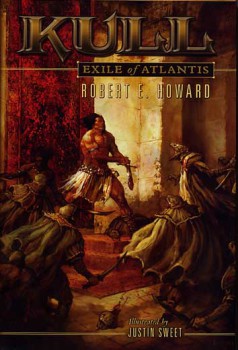Vintage Treasures: The Weirwoods by Thomas Burnett Swann
 |
 |
 |
We haven’t discussed Thomas Burnett Swann much here at Black Gate (a quick search pops up only one previous title, his 1972 paperback Wolfwinter). He is largely forgotten today.
His second novel, The Weirwoods, was serialized in two parts in Science Fantasy in 1965. It appeared in paperback from Ace Books in 1967 with a cover by Gray Morrow (above left, click for bigger version). The back cover of that edition is in the middle. It is a very slender novel, just 125 pages, with an original cover price of 50 cents. At right is the October 1977 Ace reprint, with a cover by Stephen Hickman.
Swann published some 16 novels, which together constitute a secret history of the magical races of classical mythology, starting in ancient Egypt in roughly 2500 BC, and the inexorable decline of magic in the face of the growth of Christianity and other world religions. The Weirwoods is set in the world of the Etruscans, the pre-Roman civilization that dominated Italy from 800 to 500 B.C., and tells the tale of nobleman Lars Velcha, whose city Sutrium sits beside the mysterious Weirwoods, home to witches, centaurs, fauns, water sprites, and far stranger things. When Velcha captures the weir-man Vel and makes him a slave, he triggers a war that brings disaster to his city.











